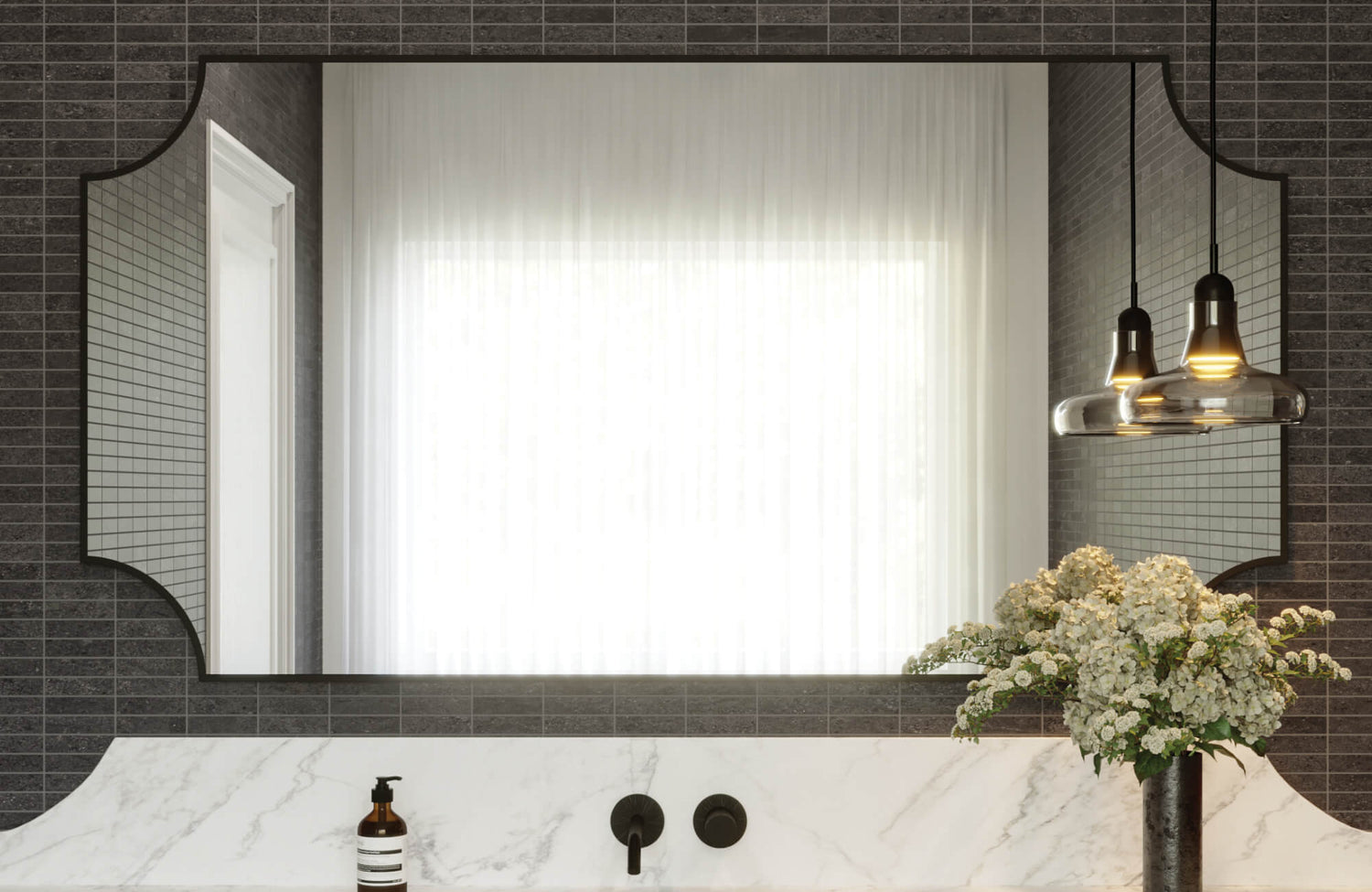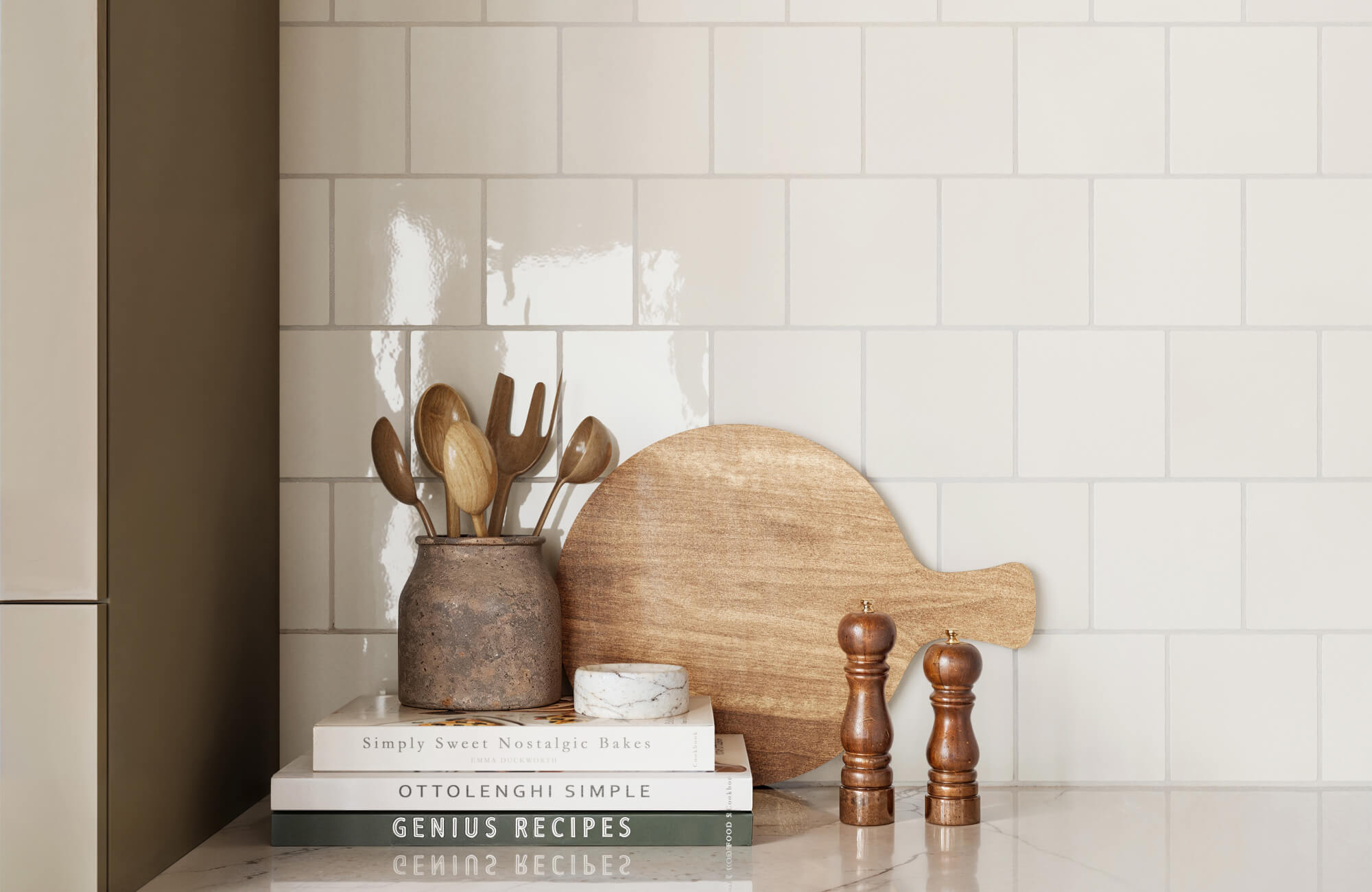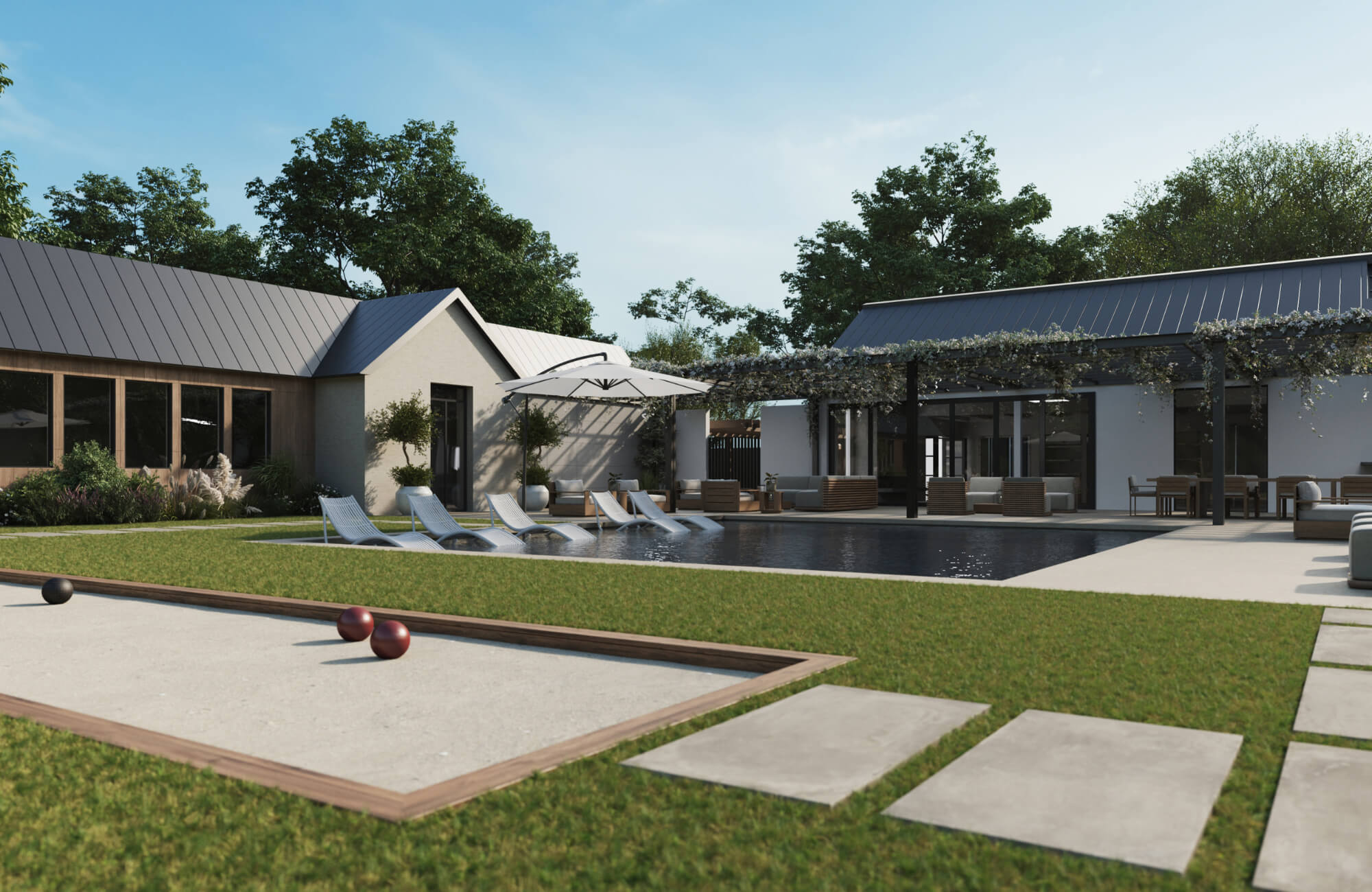A bathroom mirror is far more than a reflective surface—it is a central design element that defines both the functionality and aesthetic tone of the space. Whether framed in marble, bordered by tile, or illuminated by hidden LEDs, the shape of the mirror plays a pivotal role in shaping spatial dynamics, lighting performance, and stylistic harmony.
Mirror shapes vary widely, each bringing its own character, proportion, and influence to the room. From the crisp lines of rectangles to the graceful curves of arches and the bold personality of custom silhouettes, the options are as practical as they are expressive. Understanding how each shape interacts with surrounding materials and contributes to the overall mood of the bathroom can inform more intentional, cohesive design decisions. Whether you're designing a minimalist retreat or a classically styled sanctuary, these relationships ensure that every detail serves both form and function with thoughtful precision.

Rectangular Mirrors
Rectangular mirrors are a classic and widely favored choice in bathroom design, valued for their clean lines, straightforward proportions, and versatile compatibility with a range of styles. Their geometric clarity not only complements the structured rhythm of tiled surfaces but also supports functional needs with ease and precision.
Enhanced Functionality and Visibility
With their broad horizontal span, rectangular mirrors provide a wide reflective surface, enhancing usability for shared or double vanities. This makes them especially effective in family or guest bathrooms where multiple users need simultaneous access. Because they offer uniform vertical reflectivity, users benefit from consistent eye-level visibility regardless of height. Additionally, rectangular mirrors often come in standard sizes, simplifying replacement or upgrades. Their flat profile enables easy wall mounting, whether flush-set or framed. This practicality also explains their enduring popularity among contractors and designers alike.
Tile Alignment and Pattern Versatility
Rectangular mirrors align naturally with standard tile formats such as subway, stacked bond, running bond layouts, and square grid patterns. This linear harmony facilitates a clean, consistent aesthetic that minimizes visual disruption. Whether used with rectangular or square tiles, the shared rectilinear geometry reinforces grid alignment and visual order. For tile professionals, this simplifies edge detailing and alignment, reducing material waste. Additionally, mirror width can be matched exactly to tile modules, enhancing grid integrity. The rectangular shape also allows for the straightforward use of Schluter trims or bullnose edges around the mirror's perimeter. These characteristics make it an ideal shape for installations emphasizing symmetry and precision.
Lighting Compatibility and Optimization
Rectangular mirrors are particularly well-suited to integrated lighting systems, such as horizontal LED strips or flanking sconces. Their linear shape ensures even light distribution across the mirror's surface, minimizing facial shadows. For tile professionals, the symmetry enables easy planning for electrical junctions embedded in tile substrates. These mirrors allow ample space for dimmable lighting controls or defogging elements. Uniform illumination is also critical in task-oriented zones like above the vanity, where lighting accuracy directly impacts grooming tasks. Overall, rectangular mirrors streamline both installation logistics and lighting performance.
Oval and Circular Mirrors
Oval and circular mirrors introduce gentle curves that contrast beautifully with the angular elements commonly found in bathrooms. Their soft, flowing forms contribute to a more relaxed atmosphere while subtly shaping the room’s visual balance and light distribution.
Spatial Flow and Perceived Openness
Circular mirrors contribute to an enhanced sense of openness in compact bathroom settings. Their lack of corners allows sightlines and light to travel more fluidly, mitigating visual congestion. The continuous edge of a round mirror also reduces psychological boundaries within the space. This can be especially advantageous in powder rooms or en-suites with limited square footage. When paired with linear surfaces like subway tile, the contrast between the mirror's soft curves and the tile's clean lines adds visual rhythm and balance. Tile professionals may also recommend complementing round mirrors with curved mosaics, arched alcoves, or elongated tile patterns to amplify this flowing, open effect. The result is a space that feels more breathable and less compartmentalized.
Aesthetic Contrast and Focal Enhancement
Oval and circular mirrors offer aesthetic relief from the sharp edges of tile, cabinetry, and fixtures. This contrast draws attention to the mirror itself, making it a natural focal point within the bathroom. From a design perspective, round mirrors suit a variety of styles, from mid-century modern to contemporary bohemian. Their sculptural quality can also be enhanced by pairing with backlit LED halos or metallic frames. For tilers, the integration process may require radial or pie-cut tile configurations around the edges, demanding greater precision. The payoff is a striking, elevated look that adds sophistication to the design.
Centered Symmetry with Vertical Fixtures
Vertically mounted oval mirrors bring a graceful sense of height and balance to single vanity settings. When centered above a vessel sink or pedestal basin, they form a clean, harmonious axis that anchors the space with quiet elegance. The soft curvature of the mirror also echoes the shapes of rounded faucets, arched light fixtures, and gently contoured tilework, creating visual continuity without rigidity. Achieving this refined look requires precise alignment with nearby grout lines and tile seams, as well as thoughtful adjustment of mounting hardware to accommodate the mirror’s curved edges. When carefully executed, the result is a serene, symmetrical composition that feels both intentional and effortlessly calm.

Arched Mirrors
Arched mirrors bring a refined architectural presence to the bathroom, echoing classical forms while introducing soft lines that balance more angular design elements. Their silhouette adds a sense of visual rhythm and serves as a timeless focal point within the tiled environment.
Height Emphasis and Ceiling Illusion
Arched mirrors naturally draw the eye upward, making ceilings appear higher and spaces more vertical. This design trick is especially valuable in bathrooms with low ceilings or minimal natural light. The mirror’s apex introduces a sense of elongation that balances horizontal tile layouts. When paired with tall backsplashes or vertical tile orientations, the upward motion is accentuated. This technique can transform cramped or utilitarian bathrooms into more elegant, airy environments.
On the other hand, when paired with horizontally stacked tiles, the gentle arc of the mirror introduces upward motion that contrasts with the tile’s linear direction, creating a dynamic push-pull between grounded lines and rising curves. Precision alignment with the surrounding tile is crucial to fully realize this illusion.
Compatibility with Traditional Tile Motifs
Arched mirrors resonate with timeless tile styles such as herringbone, chevron, and encaustic patterns, all of which share an ornamental quality that complements the mirror’s graceful form. Their soft curvature echoes the flowing lines often seen in Mediterranean or Spanish Revival bathrooms, reinforcing a sense of architectural heritage.
At the same time, they pair beautifully with horizontally stacked, handcrafted-look tiles, where subtle texture and tonal variation add warmth and an organic feel to the space. This versatility allows tilers to frame the arch using contrasting borders or accent tiles that gently emphasize its shape without overwhelming the design. Niche tiling or decorative medallions can also be thoughtfully incorporated to echo the mirror’s curvature and add moments of visual interest.
A perfect example of this synergy is Edward Martin’s Esmeralda Small Mirror in Polished Brass. As shown in the photo above, its refined arch and warm brass frame enhance traditional tile palettes while providing a sophisticated focal point. The mirror’s classic silhouette blends seamlessly into patterned or textured tile walls, echoing architectural elegance and elevating visual warmth. Whether used in pairs above a double vanity or as a singular statement, this Esmeralda mirror embodies the timeless charm and craftsmanship this mirror style is known.
Tiling and Framing Challenges
Installing tile around an arched mirror requires high-level technical skill and specialized tools. Unlike rectangular mirrors, arches cannot rely on standard straight-edge cuts or trim pieces. Tilers must often use waterjet cutting or create custom templates to ensure precise contour matching. Errors in measurement or cutting become highly visible due to the irregular geometry. Additionally, waterproofing around the curved perimeter must be addressed carefully, especially in wet zones. When executed properly, the result is a seamless and luxurious installation that stands out as a hallmark of craftsmanship.
For those seeking to achieve this level of precision and elegance, Edward Martin’s design services offer tailored expertise in harmonizing mirror shapes with tile installations. Our team blends architectural knowledge with artisanal detailing, ensuring every curve and surface works in concert.

Square Mirrors
Square mirrors offer a sense of balanced simplicity, making them ideal for designs that value symmetry and clean geometry. Their equal proportions lend themselves well to modern, minimalist bathrooms, where order and clarity take visual priority.
Emphasis on Geometric Uniformity
Square mirrors reinforce grid-based tile layouts, echoing the uniformity of square mosaic or slab tiles. This repetition enhances visual continuity across the wall surface, contributing to a minimalist aesthetic. Their equal-sided geometry also demands strict alignment, which makes level placement critical to the overall look. To achieve this, tilers often use laser levels and layout guides to ensure consistency. Grout lines and mirror edges can then be aligned to form uninterrupted visual pathways, culminating in a striking composition of order, precision, and visual calm.
Centering in Compact Spaces
Square mirrors are well-suited for narrow walls or niche installations where horizontal space is limited. Their compact footprint allows them to fit comfortably above single sinks or corner vanities. Because their proportions are uniform, they provide visual equilibrium even in asymmetrical layouts. When used with centered pendant lights or drop-in basins, square mirrors establish a grounded, symmetrical appearance. However, tilers must take extra care in edge finishing and joint spacing to enhance the mirror’s geometric clarity, as this detail quietly reinforces the overall sense of balance. It’s this thoughtful precision that makes square mirrors a go-to choice for smaller, design-conscious bathrooms.
Modern Integration with Material Uniformity
Square mirrors often pair beautifully with contemporary surface materials like matte porcelain, terrazzo, or polished concrete. Their no-frills geometry complements the clean, unbroken lines of large format tile panels, reinforcing a minimalist aesthetic. To maintain this visual discipline, tile installers must focus on crisp edge transitions and tightly controlled grout lines.
The simplicity of the mirror’s shape also makes it ideal for backlit or integrated lighting panels, which can enhance its silhouette without adding visual clutter. In many cases, these mirrors feature a minimal frame that subtly outlines the form while allowing the surrounding materials to take center stage and complete the look with quiet confidence.
An excellent example is the Clancy Small Mirror in Antique Brass, which seamlessly blends into minimalist and modern settings while adding a touch of refined warmth. As shown in the photo above, its square form and clean brass frame anchor the vanity space with architectural clarity. This mirror’s elegant simplicity also complements soft-toned tiles and natural wood finishes, creating a balanced look that feels both grounded and elevated. It's a go-to piece for those looking to marry form, function, and material harmony in smaller yet stylish bathrooms.

Custom and Asymmetrical Mirrors
Custom and asymmetrical mirrors introduce a bold, artistic element to the bathroom, turning functional fixtures into striking visual statements. With their unconventional forms, these mirrors invite creativity while challenging traditional approaches to tile layout and lighting integration.
Visual Identity and Unique Expression
Asymmetrical mirrors become focal points by breaking conventional forms and attracting immediate attention. They introduce a layer of uniqueness that defines the space and often reflects the homeowner's personal taste. These mirrors are also ideal for boutique hotels, designer homes, or creative residential projects. Their fluid or fragmented outlines create movement and unpredictability in the visual composition. From a tile perspective, the mirror becomes a canvas around which design decisions revolve. This shifts the mirror from utility to an art object.
A prime example is our Rory Mirror in Antique Brass Iron, which brings sculptural elegance to compact and dramatic settings. As shown in the image above, its organic form and brass finish command attention without overpowering the surrounding materials. This balance allows the mirror to introduce warmth, depth, and an artistic flair, making it an ideal match for bold tilework and narrow vanities. In turn, its presence transforms a simple wall into a curated design moment, capturing the individuality and creative freedom that asymmetrical mirrors are designed to express.
Custom Tiling and Fabrication Considerations
Installing tile around a non-standard mirror shape requires specialized planning and precise execution. To begin, custom templates are essential for accurately mapping the mirror’s contours onto the tile substrate. From there, waterjet or CNC cutting is often used to craft tiles that match the mirror’s complex shape with exacting precision. Installers must also account for expansion joints and tile tolerances to prevent stress fractures over time. In some cases, floating grout joints or irregular mosaic layouts are used to accommodate the mirror’s organic outline. Together, these technical and aesthetic demands call for a rare combination of craftsmanship and creative sensitivity.
Lighting Integration with Non-Linear Forms
Lighting around asymmetrical mirrors must adapt to their unconventional geometry, where standard fixtures like sconces or overhead lights may fall short. In these cases, flexible solutions, such as perimeter LEDs, offer greater adaptability. These systems need to be thoughtfully embedded within the tile substrate or mirror frame to achieve consistent, even illumination. Ideally, the lighting should highlight the mirror’s sculptural silhouette without overpowering the surrounding design. To achieve this, designers often turn to dimmable RGB LEDs or adaptive smart lighting that can shift ambiance with ease. When carefully integrated, these lighting elements transform the mirror into a bold centerpiece that defines the entire bathroom experience.
Regardless of mirror shape, whether rectangular, arched, circular, square, or custom, professional installation is key to achieving a refined, cohesive result. From precise alignment and tile integration to lighting coordination and structural support, experienced hands ensure every mirror becomes a flawless extension of the bathroom’s design vision.
The Mirror Shape That Defines Your Bathroom
The shape of a bathroom mirror is a key design element that blends function with visual appeal, shaping everything from spatial flow to tile alignment. Whether it’s the crisp lines of a rectangle, the soft curves of a circle, the elegance of an arch, the balance of a square, or a bold custom form, each shape speaks uniquely to its surroundings. A well-chosen mirror not only supports daily use but also enhances the room’s design harmony. The best choice is one that complements the bathroom’s materials and layout with clarity, beauty, and purpose.
If you're planning a bathroom transformation and want expert guidance on integrating the right mirror shape with tilework and lighting, Edward Martin is here to help. Our design specialists are available to consult on both aesthetic and technical considerations. Contact us to start your design journey with a team that brings precision, elegance, and purpose to every detail!








